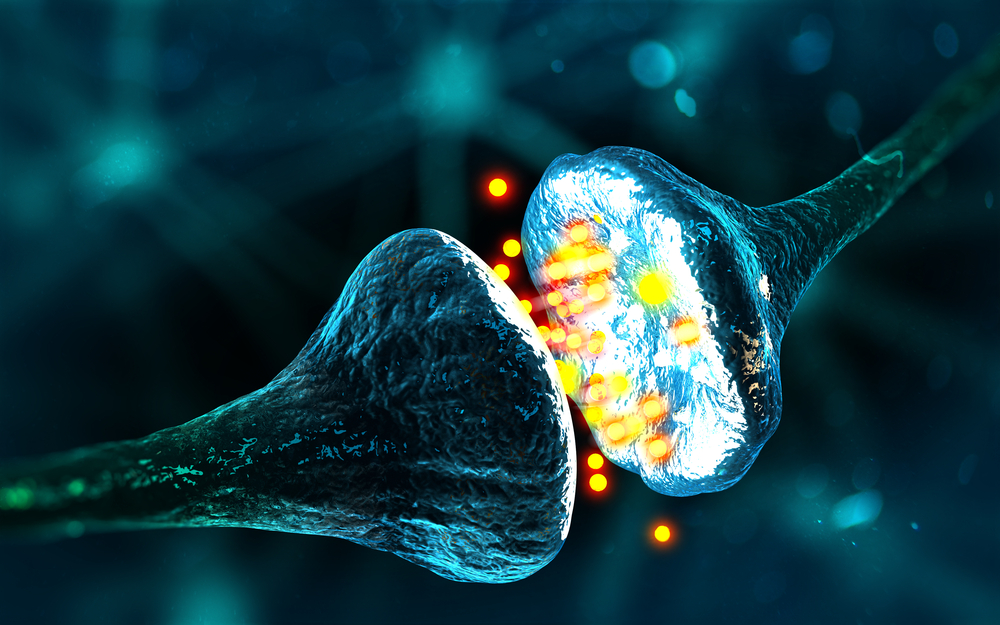Synaptic Proteins Linked to Parkinson’s Could Aid in Early Intervention, Study Says

Key proteins involved in neuron communication are potential targets that could aid in early diagnosis and prediction of disease progression in patients with different types of dementias, including Parkinson’s disease, a study suggests.
The study, “Synaptic markers of cognitive decline in neurodegenerative diseases: a proteomic approach,” was published in the journal Brain.
Specific synaptic proteins, which are involved in neuron-to-neuron communication, were identified and linked to cognitive decline associated with Parkinson’s, Alzheimer’s, and dementia with Lewy bodies.
Loss of synaptic contact is a common finding in the brains of individuals with Alzheimer’s disease. Synaptic dysfunction also occurs in Parkinson’s and dementia with Lewy bodies, according to studies.
Though early cognitive deficits are related to memory, decline is seen in all cognitive areas as neurodegenerative diseases progress.
Researchers from the Karolinska Institutet in Sweden analyzed the protein content of the prefrontal cortex of 32 post-mortem human brains of patients with Alzheimer’s disease, Parkinson’s disease with dementia, dementia with Lewy bodies, and older adults without dementia.
They looked specifically at proteins in the prefrontal cortex because of its role in cognition and executive functions (reasoning and decision-making) in all three diseases.
This was the first detailed quantitative protein analysis that focused on synaptic protein characterization of Alzheimer’s, Parkinson’s and dementia with Lewy bodies brains.
A total of 10,325 proteins were identified, 851 of which were synaptic proteins.
Researchers detected a pattern of protein loss in the area where electric nerve impulses are transmitted between two nerve cells across all three neurological disorders. Significant changes in the levels of 25 synaptic proteins were observed in all dementia groups.
Cognitive impairment before death and the rate of cognitive decline also closely correlated with the loss of five key synaptic proteins (SNAP47, SYBU, LRFN2, SV2C and GRIA3).
The team was able to successfully differentiate not only the distinct types of dementia in the demented samples, but also dementia samples from healthy controls.
“Besides differentiating Parkinson’s disease dementia, dementia with Lewy bodies, and Alzheimer’s disease from controls with high sensitivity and specificity, synaptic proteins also reliably discriminated Parkinson’s disease dementia from Alzheimer’s disease patients,” the researchers wrote.
“Our findings suggest that particular pre- and postsynaptic proteins have an important predictive and discriminative molecular fingerprint in neurodegenerative diseases and represent potential targets for early disease intervention, such as synaptic regeneration,” Erika Bereczki, PhD, lead author of the publication, said in a press release. Bereczki is a researcher at the Department of Neurobiology, Care Sciences and Society, Karolinska Institutet.
“Our results suggest shared mechanisms, with major implications for prognostic and diagnostic marker development as well as advancing future therapeutic interventions for improving the disease course. This places synaptic dysfunction and repair approaches in the spotlight of attention, especially since the therapeutic intervention window for synaptic repair and regeneration is longer than the recent toxin-clearance approaches,” she said.






